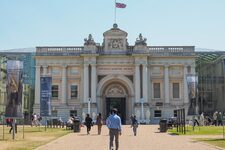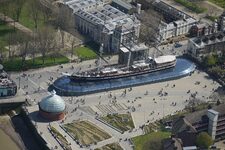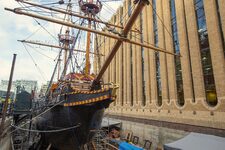Maritime Greenwich: World Heritage and Captivating Museums
Maritime Greenwich: A Treasure Trove of Naval History in Southeast London
Introduction
Maritime Greenwich, located in southeast London on the banks of the Thames River, is a historically significant site of great cultural importance. It houses an impressive collection of classical buildings and monuments linked to Britain's maritime history. In this article, we will delve into the history, architecture, and significance of Maritime Greenwich, also known as Greenwich, as a historical landmark.
Origins and History
The Greenwich neighborhood has been associated with maritime history for centuries. However, its importance grew in the 17th century when King Charles II decided to establish the Royal Observatory Greenwich in 1675 to address the challenge of determining longitude at sea. This observatory, where the Greenwich Meridian now runs, became the international reference point for time and space measurement.
Architecture and Features
Maritime Greenwich is dominated by several remarkable buildings, including:
-
The Royal Observatory Greenwich : This historic observatory houses the famous chronometer by John Harrison and the Greenwich Meridian, which divides the world into Eastern and Western hemispheres.
-
The Queen's House : Built in the 17th century, it is one of the early examples of Palladian architecture in England.
-
The Old Royal Naval College : A majestic complex of buildings that once served as a hospital for sailors. It is now a UNESCO World Heritage site.
-
The Cutty Sark : A famous iron clipper ship that has been restored and transformed into a maritime museum.
-
The National Maritime Museum: The world's largest maritime museum, housing an extensive collection of items related to the sea and exploration.
Historical and Cultural Significance
Maritime Greenwich holds significant historical importance as a center for British maritime history. The Royal Observatory Greenwich marks the starting point of the Greenwich Meridian, which serves as a reference for the global time system and longitude measurement.
The area also serves as a hub for research and education, with museums and academic institutions dedicated to maritime exploration and navigation.
Current Use
Maritime Greenwich is a major tourist attraction, drawing visitors from around the world for its history, architecture, and museums. It is also used for cultural events, conferences, and exhibitions related to the sea and exploration.
Conclusion
Maritime Greenwich is a globally significant historical and cultural monument deeply rooted in Britain's maritime history. Its elegant architecture, captivating museums, and its role in time and space measurement make it a must-visit destination for history enthusiasts and travelers seeking cultural discoveries in London.




